Playing Hide and Seek with Malicious Scripts
When I encounter a drive-by download that involves a compromised host, there will usually be a malicious script somewhere on the website. The "malicious script" could be a meta refresh tag, an iframe, an external Javascript file, or even in a SWF file. Its location can give you a hint as to how the site got compromised as well as to help the webmaster verify and remove the infected file(s).
Oftentimes, these scripts can be found at the top or the bottom of the webpage:
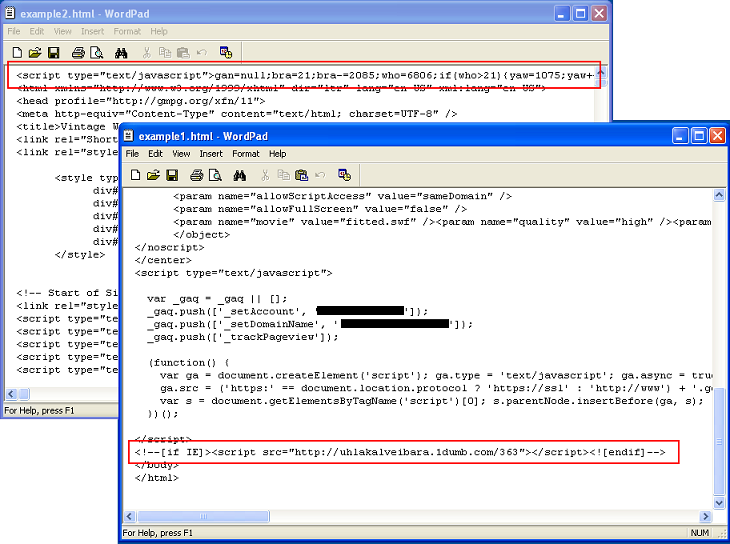
Lately, however, I'm noticing that it's getting harder to find them. Here's a couple from just this week alone!
Near the top of an external Javascript file called "site_util.js" is a self-executing function. The lack of formatting made this one stick out.
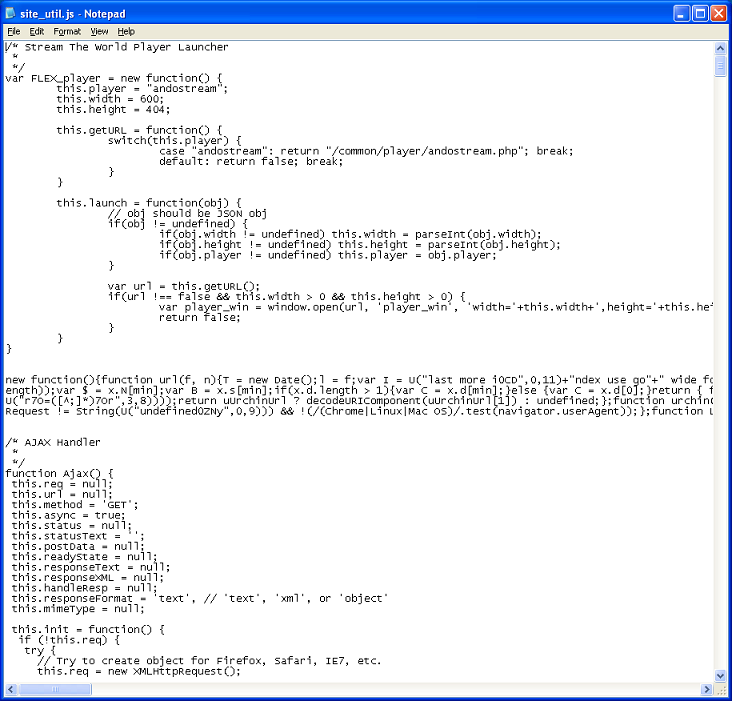
In this drive-by, the malicious script was buried in the "jquery.js" file. Do you see it? I nearly missed it myself. (Hint: look for the document.write statement.)
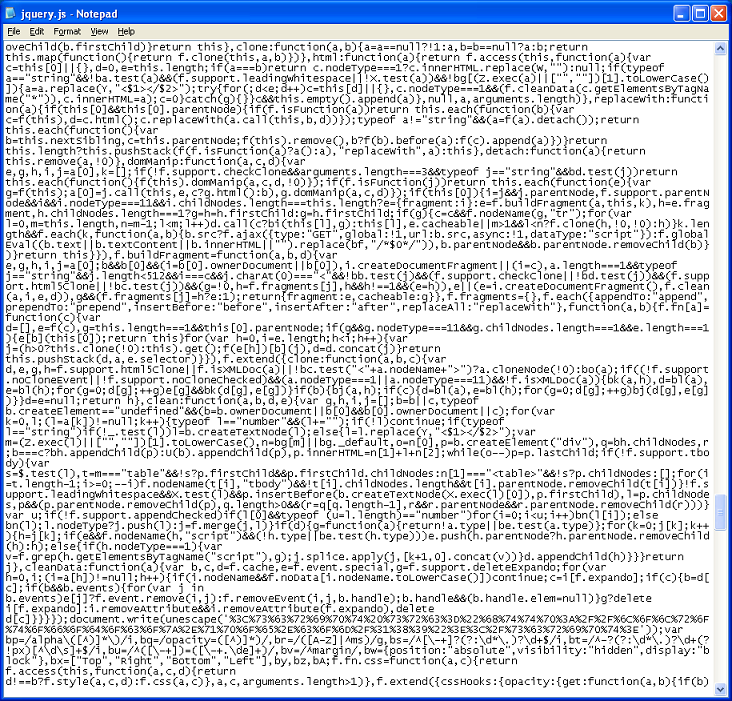
I'm trying to develop a method of identifying malicious scripts and work backwards to locate where they came from. The first hurdle is trying to identify the malicious script. As a malware analyst, we can mostly recognize that a script is suspicious just by looking at it. Here's an example:
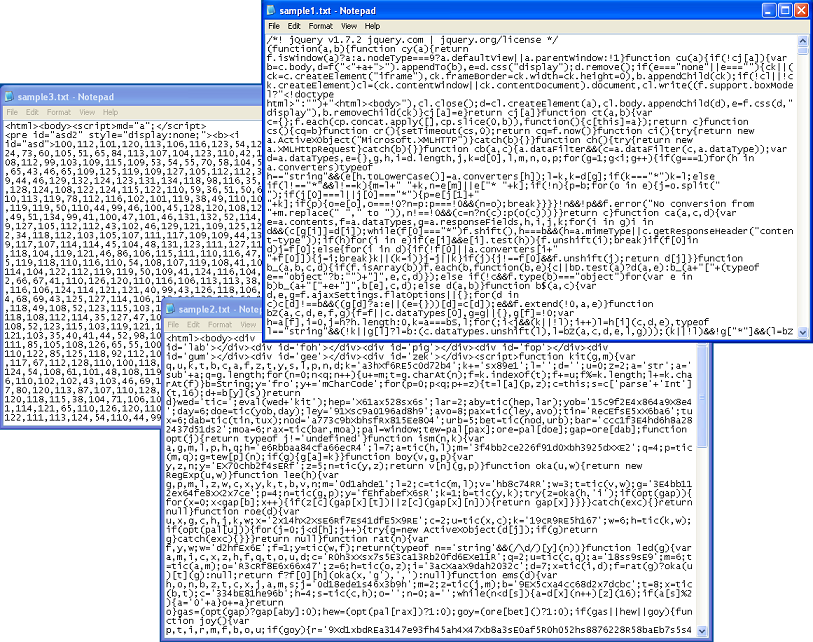
In the above, Sample #1 is a benign JQuery script. The other two look suspicious. How do you write a program that mimics what our eyes see? Yeah, right, I'm not crazy. What I can do is write a program that identifies "entropy". (I know that's not the right word but it's close enough until I find a better word.) If you look closely at the JQuery script, you can recognize many valid Javascript keywords. While it exists in the other two scripts, there's not a whole lot. Instead, there's a ton of random characters and numbers. So what if I write a program to look for randomness, then I might be able to spot malicious scripts. Then I'll need a way to enumerate all the objects used by a webpage and keep track of what it loads.
Here are results from actual drive-bys using the above methodology:
The main site had an iframe to a local (infected) PHP file. The PHP file had obfuscated Javascript that redirected visitors to an exploit pack.
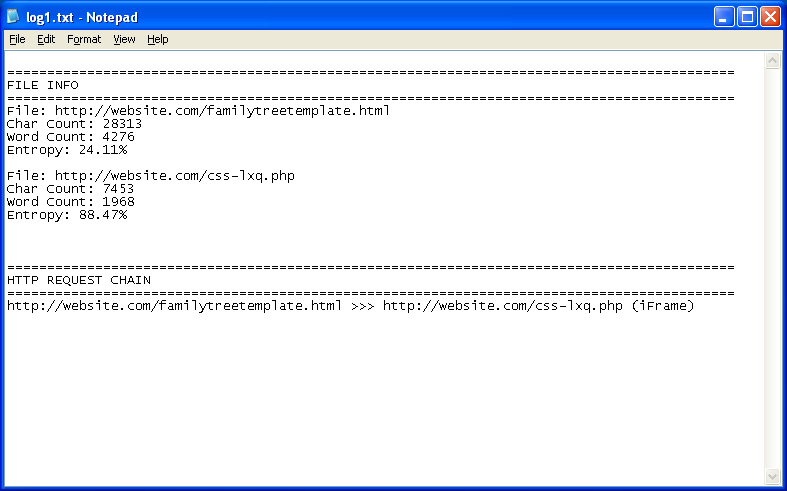
In this drive-by, there was an iframe to Blackhole from the main website.
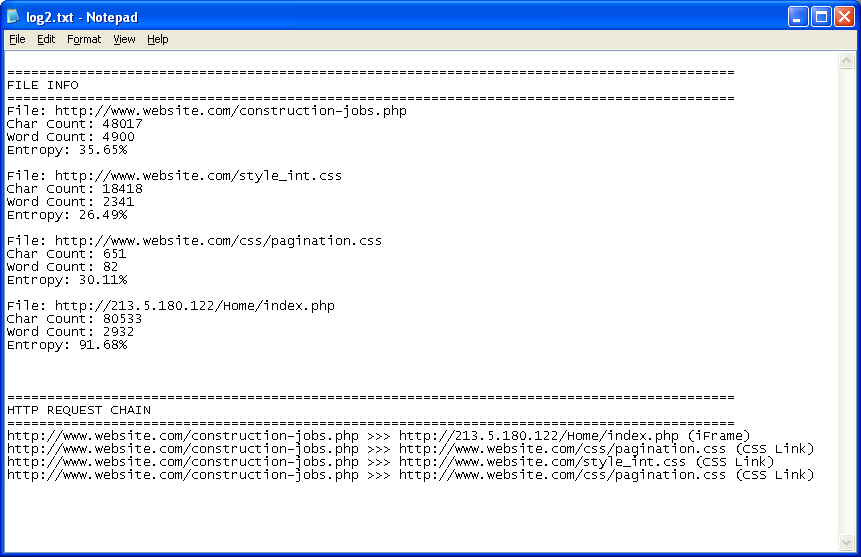
Last one. The main webpage loaded a local file via an iframe which had a meta refresh tag to Blackhole.
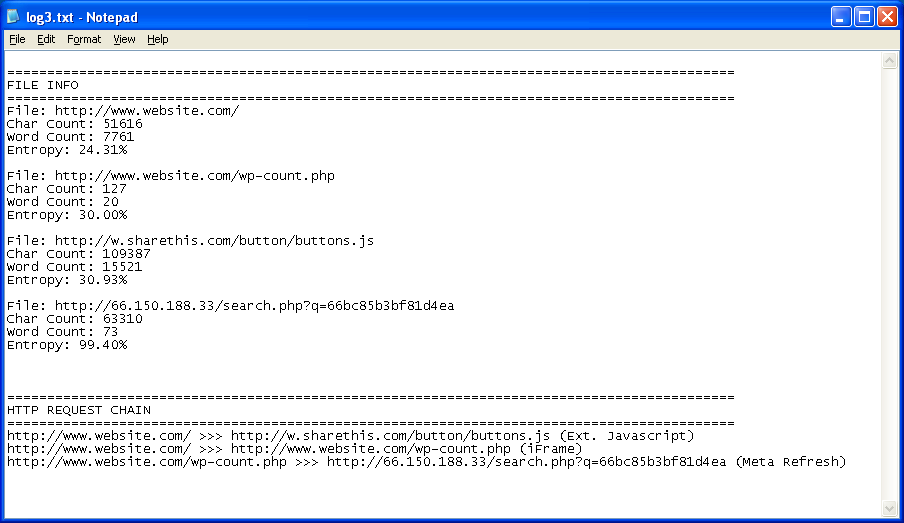
Looks promising but I still need to figure out how to find those pesky malicious needles in the proverbial haystack.

